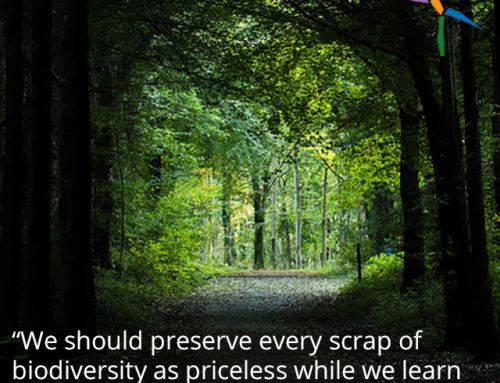Ah, the summer road trip. It’s a tradition as long standing as, for the most part, America itself. From iconic road trip novels like On the Road to famous road trip movies like the epic Thelma and Louise, there’s something about a road trip across this great country of ours that somehow feels like a rite of passage. Even those who can’t take the months to travel by car often try to ensure that they visit all fifty states and mark them on the now ubiquitous online interactive maps. But taking a cross country American trip obviously generates a significant carbon footprint. Today, we’re breaking down the obvious (and some less obvious) ways that footprint adds up and then offering some more eco-friendly alternatives.
Carbon Footprint Culprit Number One: Obviously It’s the Driving!
We know that this one is obvious, so let’s get it out of the way right now. In fact, we will just smile if you simply skip this paragraph and go right to the next one! If you are driving across the country, you are leaving a huge exhaust pipe of pollution in your wake. Is this reduced somewhat if you use a hybrid, electric or fuel efficient car? Absolutely, but it does still exist. Driving is possibly the least eco-friendly way to travel because the fuel and pollution per person is higher than any form of mass transit in which multiple people are all reducing the per capita effect of the waste generated. Yes, you can offset this a bit by putting more people in your car, but then you’d better be ready to share car music decisions!
One Thing You Can Do To Reduce This: Consider the train! Yes, you’re still putting exhaust into the world, but as we mentioned above the per capita impact is less. You’re also still seeing all of the landscape and as an added benefit you can just sit back and relax. When you run the numbers, you may find out that you’re actually spending far less money than if you had driven. Is it an ideal solution? No. But until there’s a cross-country Hyperloop, it’s still your best option.
Carbon Footprint Culprit Number Two: That’s a lot of Takeout Food!
Now we get to the things that you may not have thought of! What are you eating while you’re on your cross-country road trip? Let’s assume that you’re not taking an RV (which has its own carbon footprint issues). That means, in most cases, you’ll be without a kitchen and cooking tools. So what are you eating? The obvious answer is a lot of takeout. You can do takeout without being hopelessly unhealthy, but you can’t do takeout without the takeout containers. We’d like to believe that many of the takeout joints you’ll stop in are using eco-friendly takeout containers and that you’ll have access to places that recycle those containers, but we all know that is largely wishful thinking. Multiply how many meals you’ll eat per day by how long your trip will take and then, well, cringe just a little!
One Thing You Can Do To Reduce This: This is really two things! The first is to save up all of your recyclable takeout containers as you go along until you land somewhere that you can properly recycle them. The second (which will help you stay healthy as well) is to opt for grocery stores and fresh foods that don’t require takeout containers whenever you can. Remember, a banana has a perfectly recyclable container created by nature!
Carbon Footprint Culprit Number Three: It’s In the Way That You Sleep!
Or, essentially, wherever you call home when you’re not actively on the road. There is obviously an entire scale of how impactful that can be. Are you camping when you’re not actively driving? If so, that’s better for the planet, but you still want to make sure that you’re using the most eco-friendly camping practices that you can. If you’re staying at a hotel, there’s generally speaking a lot of eco-waste involved at most lower cost hotel chains (the type you’re likely to be using on a cross country road trip). There are certainly things that you can do to minimize the carbon footprint of a hotel stay (avoid single-use soaps and don’t treat the heating and cooling system like it’s a free pass since you’re not at home), but you’re still leaving an eco-mark.
One Thing You Can Do To Reduce This: Embrace the term road trip literally! Sleep in your car and shower at truck stops and reserve the hotels for when it’s a treat. Be safe out there, but consider all of your eco-impact!
Carbon Footprint Culprit Number Four: Take Only Memories. Leave Only Footprints.
You may not think of a road trip as the type of vacation where you bring back souvenirs, but you’d be surprised how quickly “stuff full of memories” can pile up in your car – or even in your backpack. Some souvenirs are eco-friendly and even natural, but many support not only environmental practices that would make us all think twice but also social and ethical problems. And, of course, you wouldn’t expect Postconsumers to write an article about eco-friendly road tripping without mentioning the role that consumerism plays in it, would you?
One Thing You Can Do To Reduce This: We actually have some great ideas for eco-friendly and non-consumer trip souvenirs to fill up your trunk or baggage with right here for you!
We actually love the idea of a road trip despite its relatively high carbon footprint. Seeing the country or world that you live in and interacting with people from all parts of it is an important step towards bringing the world together. Just try to keep in mind the need to preserve the planet you’re traveling on. Get started thinking about it with this easy-to-digest set of ideas. Then, hit the road and go exploring!
Did we miss a way in which a cross-country road trip may be harmful to the earth? Tell us about it on the social media channels below.
Facebook | Twitter | Instagram | Tumblr | Pinterest | Google+ | Medium
Photo Credit: Derek Cabellon via Flickr





